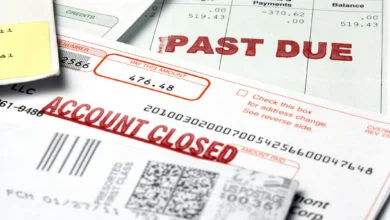How to Beat Inflation at the Supermarket
Could you handle a big announcement that overnight food costs in the United States have miraculously dropped by 20%? That you will see this miracle in your local grocery or supermarket on your next visit? You can if you pay attention and then heed what you’re about to read. Know this: There’s not one single way to reduce your family’s food costs. The key is to use a combination of strategies.
EAT THE SALES. Build your grocery list from the sale ads. If it’s not on sale, don’t buy it, at least not this week. Every supermarket and grocery store — even the discount outlets — have weekly sales. In fact, over a 12-week period, something in every department of that store will be on sale, and I’m talking about an authentic, fabulous sale!
LOSS LEADERS. Loss leader means the store is willing to let you buy the item at a crazy sale price that is even lower than its cost — just to get you through the door. They know that once you’re in, you will end up paying full price for so many other things, you’ll willingly make up for its loss many times over. But don’t fall for that! Beat them at their own game. Load up on those loss leaders if they’re items you and your family will eat and you have room to store in the pantry or freezer. Now you won’t need to rebuy until the next sale.
KNOW YOUR PRICES. Supermarkets routinely drop prices by 20% or more for loss-leader sales. That’s the time to buy. Devise a system that will keep you current on the shelf price versus a “sale” price of food items you buy on a regular basis. It might be a small notebook you carry with you or a spreadsheet you maintain in your device. Marketing campaigns take advantage of the ignorance of the buying public. You need to be smart enough to know real deals and counterfeits when you see them. It’s difficult to not find the humor in a sign that announces “Two for $5” unless you know the regular price is $2.29 each. Think I’m kidding? No! It happens all the time where I shop, and I get a good laugh every time.
USE COUPONS. These days you’re more apt to see digital coupons than paper, but the strategy still stands. Make sure you are signed up with the store you’re shopping at, then consider every coupon (paper or digital) it offers. However, just because that digital coupon will give you 25% off does not mean it deserves a place in your shopping cart! Anticipate and plan ahead. If your family doesn’t need that item, or it’s something you will never find a way to use, walk on by.
SHOP ALDI. This is a discount grocery retailer specializing in its own private-label products. ALDI prices are so low it’s like having a double coupon on everything. Instead of managing 25,000 different items like a mega-supermarket, ALDI carries just 1,300 of the most needed food products, including produce and meat. As I write, ALDI operates stores in more over 20 countries, with 2,372 locations in the U.S. (Sadly, none currently in Colorado, where I live). To find a complete list of locations, go to aldifoods.com, or call ALDI headquarters in Batavia, Illinois, at 630-879-8100.
THINK SEASONAL. Pound for pound, fresh produce can be much cheaper and more nutritional than fast food, chips, cookies, candy, soda or pre-packaged, pre-processed convenience items. But there is a catch: You have to buy what’s in season. If it’s $4.99 a pound, it’s not in season. When apples are two pounds for 99 cents, bananas 49 cents per pound and flame seedless grapes 99 cents per pound, you know they’re in season. There’s a glut on the market; this retailer needs to move those items now! There are always bargains in the produce department. Adjust your tastes accordingly.
SET LIMITS. This is the fun part. Example: I don’t spend more than $2 for a box of cereal. It’s not always available at that price, but when it’s on sale or I have coupons to match, I stock up. My personal limit for boneless skinless chicken breasts is $1.97 per pound; $2 for 16 ounces of salad dressing and so on.
CONTROL PORTIONS. Dr. Dean Edell, author of “Eat, Drink, & Be Merry,” says the healthiest diet is not one that is low on fat or high on carbs. The healthiest way to eat is to eat less — small amounts of a large variety of foods. Rather than serving dinner family style (passing the food around the table), try restaurant style: Plate the food in the kitchen. Now the cook controls portion sizes — a great first step to reversing overconsumption.




